 Crown Castle International announced today that it has formed a new subsidiary, Crown Castle Mobile Media, tasked with delivering live mobile television services to handheld devices including cell phones.
Crown Castle International announced today that it has formed a new subsidiary, Crown Castle Mobile Media, tasked with delivering live mobile television services to handheld devices including cell phones.
Crown Castle Mobile Media intends to build and operate a dedicated digital network for broadcasting digital television content to PDAs, cell phones and other suitable devices.
The technology being used, Digital Video Broadcasting- Handheld (DVB-H), is currently expected to become the global standard for mobile television and has been formally adopted by both the DVB Organization and the European Telecommunications Standards Institute (ETSI).
Crown Castle and Nokia recently completed successful demonstration trials of this open-standard technology in Pittsburgh, Pennsylvania, with Crown Castle Mobile Media expecting to roll out a commercial deployment of this service in selected major US markets during 2005.
“Crown Castle owns over 10,000 wireless towers and holds a nationwide spectrum license,” commented John P. Kelly, President and Chief Executive Officer of Crown Castle. “These valuable assets, combined with our proven expertise in digital broadcasting in the UK, provide a unique opportunity to take a leading position in the emerging mobile television market. We look forward to partnering with content providers and wireless services providers to introduce commercial services.”
Richard Sharp, vice president of Nokia’s Rich Media business unit added, “Nokia and Crown Castle broadcast mobile television for the first time in the US during live market trials that began in Pittsburgh last October and are working together to bring mobile television and radio to the hands of wireless users across the United States.
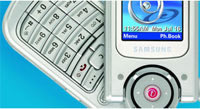 Crown Castle’s support of DVB-H is further evidence that DVB-H is a robust, open standard that will not only bring high- quality television and radio to the market, but will ensure a vibrant marketplace for infrastructure equipment, innovative devices, and compelling services.”
Crown Castle’s support of DVB-H is further evidence that DVB-H is a robust, open standard that will not only bring high- quality television and radio to the market, but will ensure a vibrant marketplace for infrastructure equipment, innovative devices, and compelling services.”
Earlier this week, Crown Castle Mobile Media also announced that it will work together with Samsung Electronics to accelerate the provision of digital television services to handset devices in the US market.
Samsung will be the world’s first wireless phone manufacturer to launch DVB-H handsets supporting both WCDMA/EVDO and GSM/GPRS networks, providing entertainment-hungry consumers with quality, built-in television screens receiving real DVB-H streaming television and Radio channels.
Crown Castle Mobile Media enjoys an unencumbered nationwide US spectrum license and anticipates building a DVB-H network across the US to transmit high-quality, multi-channel live and streaming digital television for reception on suitably-equipped cell phones.
Samsung is developing premium handsets to work on the Crown Castle Mobile Media network, and have already showcased wireless phones with 2″ QVGA screens supporting 226k colors, up to 30 frames per second, and 300 kbit/s per channel speeds.
The phones have MPE-FEC error correction implemented and use the latest H.264 and AAC+ video/audio decoding technologies.
“Samsung is recognized as a global leader bringing to market multimedia technologies that enhance the way consumers are able to use and interact with their wireless phones,” said Dale Sohn, VP of Samsung’s Overseas Investment Group.
“We understand the value of working with companies like Crown Castle Mobile Media to develop cutting-edge solutions like DVB-H.”
Mr. Michael Schueppert, President of Crown Castle Mobile Media, was suitably chuffed, “We are very excited to have a world-class leader in multimedia mobile phones like Samsung to assist in driving these new services. This collaboration will put Samsung in a position to become a key handset supplier to Crown Castle Mobile Media’s anticipated Pittsburgh DVB-H customer trial.”
Crown Castle
Samsung
![]() Set Top Box (STB) and PVR company NDS have today announced that they have reached an agreement with Frontier Silicon, a fabless manufacturer of digital media semiconductors based in the UK, to work together on technology to protect digital TV and DAB (Digital Audio Broadcasting) content on mobile devices.
Set Top Box (STB) and PVR company NDS have today announced that they have reached an agreement with Frontier Silicon, a fabless manufacturer of digital media semiconductors based in the UK, to work together on technology to protect digital TV and DAB (Digital Audio Broadcasting) content on mobile devices.![]() Many readers, especially the non-UK massive, may be thinking ‘So what? Who and who have signed a deal?’ Well the significance of NDS moving this way is that it may signal where Sky is moving. Sky, as I’m sure you know, is the satellite TV company who own the UK in satellite delivered TV, and who’s parent company News International now owns US satellite giant DirecTV.
Many readers, especially the non-UK massive, may be thinking ‘So what? Who and who have signed a deal?’ Well the significance of NDS moving this way is that it may signal where Sky is moving. Sky, as I’m sure you know, is the satellite TV company who own the UK in satellite delivered TV, and who’s parent company News International now owns US satellite giant DirecTV. Abertis Telecom, Nokia and Telefonica Moviles Espana have emerged smiling from a big converging huddle with news of a mobile TV pilot using Digital Video Broadcasting-Handheld (DVB-H) technology.
Abertis Telecom, Nokia and Telefonica Moviles Espana have emerged smiling from a big converging huddle with news of a mobile TV pilot using Digital Video Broadcasting-Handheld (DVB-H) technology.  These will be equipped with a “special accessory” to receive the mobile TV broadcasts.
These will be equipped with a “special accessory” to receive the mobile TV broadcasts.  Outdoor and indoor signal and broadcast quality will also be tested to help fine tune the best technical parameters for the viability of DVB-H based services.
Outdoor and indoor signal and broadcast quality will also be tested to help fine tune the best technical parameters for the viability of DVB-H based services.  Natalie Mouyal of
Natalie Mouyal of 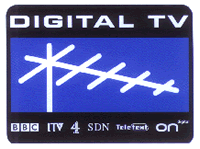 Generally, countries have tended mix the two strategies. Viewers have benefited from both an increase in the number of television service programmes available, as well as interactive television services. Yet, this combination has not always allowed for an impressive take-off of MHP based interactive services. In the case of Finland, consumers could choose between a zapper set-top box that allows them to access more television service programmes or an MHP-enabled set-top box that allows them to access both the increased number of television services programmes as well as the interactive services. However, MHP-enabled set-top boxes make up only 5% of all set-top boxes currently purchased.
Generally, countries have tended mix the two strategies. Viewers have benefited from both an increase in the number of television service programmes available, as well as interactive television services. Yet, this combination has not always allowed for an impressive take-off of MHP based interactive services. In the case of Finland, consumers could choose between a zapper set-top box that allows them to access more television service programmes or an MHP-enabled set-top box that allows them to access both the increased number of television services programmes as well as the interactive services. However, MHP-enabled set-top boxes make up only 5% of all set-top boxes currently purchased. 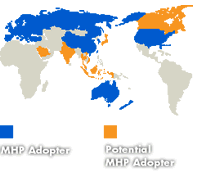 It has been assumed that many consumers will invariably prefer the cheaper zapper set-top box to a more expensive MHP-enabled set-top box. However, this reasoning disregards the type of interactive services offered. For example, should viewers find interactive services compelling and easy to use, they may be willing to spend the extra money necessary for an interactive set-top box. Thus, it would seem that consumer education is key to the successful roll-out of interactive services.
It has been assumed that many consumers will invariably prefer the cheaper zapper set-top box to a more expensive MHP-enabled set-top box. However, this reasoning disregards the type of interactive services offered. For example, should viewers find interactive services compelling and easy to use, they may be willing to spend the extra money necessary for an interactive set-top box. Thus, it would seem that consumer education is key to the successful roll-out of interactive services. 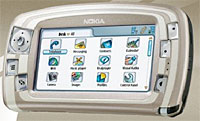 NTL Broadcast and O2 have revealed the first batch of channels to be part of their forthcoming mobile TV trial in the Oxford area, announcing an initial 16 channels including Cartoon Network, CNN, Discovery Channel, Sky Sports News and Sky Travel.
NTL Broadcast and O2 have revealed the first batch of channels to be part of their forthcoming mobile TV trial in the Oxford area, announcing an initial 16 channels including Cartoon Network, CNN, Discovery Channel, Sky Sports News and Sky Travel. 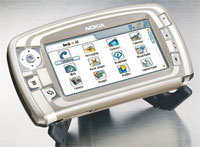 To support the trial, NTL Broadcast is building a new broadcast network of eight DVB-H transmitters to cover 120 square km around Oxford that will enable the lucky participants to receive digital television on the move. To enable a commercial service to be launched in the UK, Ofcom will need to license spectrum and O2 is already lobbying the UK regulator to bring forward plans to distribute radio frequencies for mobile TV services.
To support the trial, NTL Broadcast is building a new broadcast network of eight DVB-H transmitters to cover 120 square km around Oxford that will enable the lucky participants to receive digital television on the move. To enable a commercial service to be launched in the UK, Ofcom will need to license spectrum and O2 is already lobbying the UK regulator to bring forward plans to distribute radio frequencies for mobile TV services.  In Austria, a DTT trial with MHP-based interactive services provided 150 households in Graz with access to an interactive television service called !TV4 using the telephone connection for the return channel. Using their television remote control, viewers could retrieve information services and vote. Given the success of the trial, it is likely that MHP-based interactive services will be launched alongside DTT services.
In Austria, a DTT trial with MHP-based interactive services provided 150 households in Graz with access to an interactive television service called !TV4 using the telephone connection for the return channel. Using their television remote control, viewers could retrieve information services and vote. Given the success of the trial, it is likely that MHP-based interactive services will be launched alongside DTT services.  Of course MHP is not the only interactive television service system in the market. Proprietary systems such as MediaHighway and OpenTV have been installed in a large number of set-top boxes, often for cable and satellite platforms. In the United Kingdom, the MHEG standard is widely used on the terrestrial platform. As a result of the various products and services in the market, the DVB Project has been working on the development of the Portable Content Format (PCF) to deliver a wide range of interactive television services to multiple platforms with a minimum of re-authoring. It has significant interest for operators who wish to migrate towards MHP by allowing them to manage simultaneously a mixed population of devices.
Of course MHP is not the only interactive television service system in the market. Proprietary systems such as MediaHighway and OpenTV have been installed in a large number of set-top boxes, often for cable and satellite platforms. In the United Kingdom, the MHEG standard is widely used on the terrestrial platform. As a result of the various products and services in the market, the DVB Project has been working on the development of the Portable Content Format (PCF) to deliver a wide range of interactive television services to multiple platforms with a minimum of re-authoring. It has significant interest for operators who wish to migrate towards MHP by allowing them to manage simultaneously a mixed population of devices.  Crown Castle International announced today that it has formed a new subsidiary, Crown Castle Mobile Media, tasked with delivering live mobile television services to handheld devices including cell phones.
Crown Castle International announced today that it has formed a new subsidiary, Crown Castle Mobile Media, tasked with delivering live mobile television services to handheld devices including cell phones.  Crown Castle’s support of DVB-H is further evidence that DVB-H is a robust, open standard that will not only bring high- quality television and radio to the market, but will ensure a vibrant marketplace for infrastructure equipment, innovative devices, and compelling services.”
Crown Castle’s support of DVB-H is further evidence that DVB-H is a robust, open standard that will not only bring high- quality television and radio to the market, but will ensure a vibrant marketplace for infrastructure equipment, innovative devices, and compelling services.” 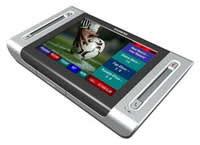 Siemens are planning to make a big splash at the upcoming CeBit in Hannover, Germany.
Siemens are planning to make a big splash at the upcoming CeBit in Hannover, Germany.